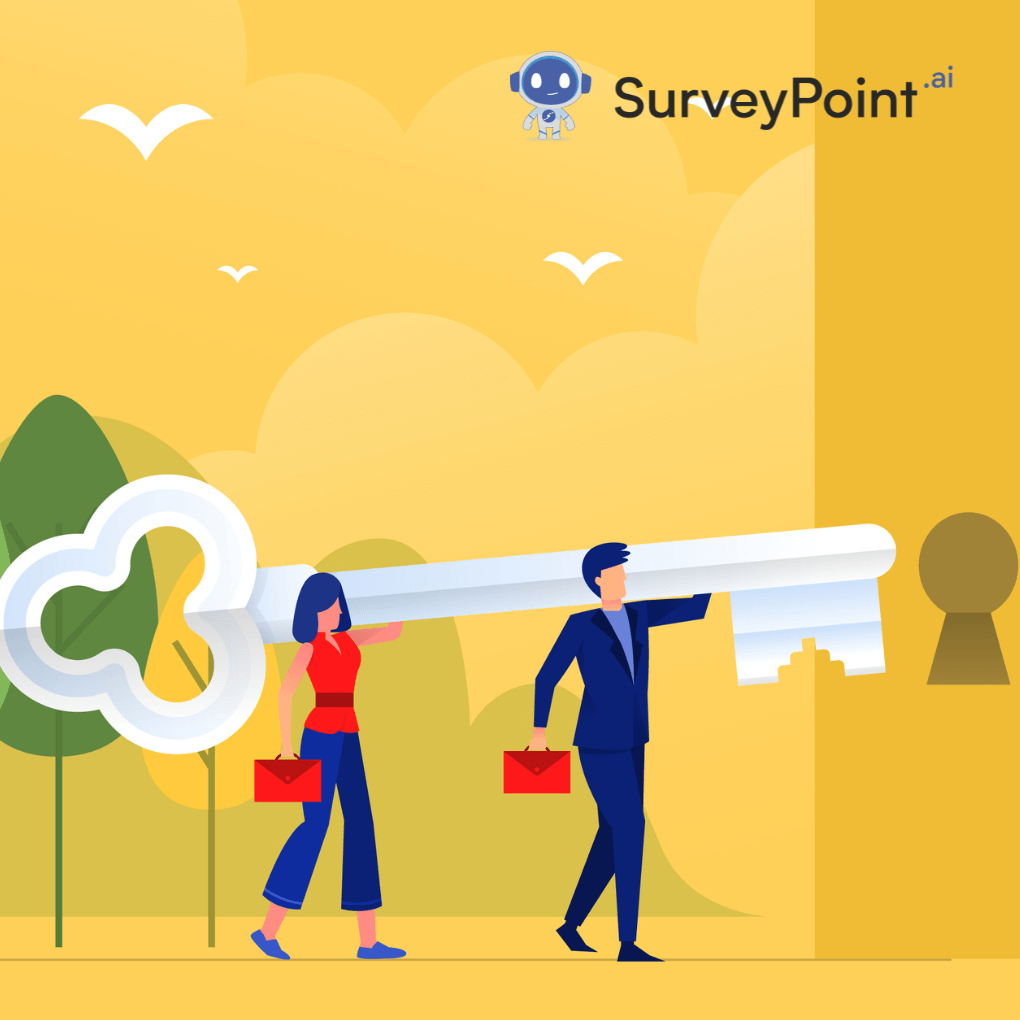
Building lasting customer relationships is fundamental to business success in today’s competitive market. While acquiring new customers is crucial, retaining and nurturing existing ones is where true growth lies. A strong customer relationship fosters loyalty, drives repeat business, and creates brand advocates. In this blog, we will explore the key elements that contribute to building and maintaining long-lasting customer relationships, the benefits they bring, and strategies that businesses can implement to strengthen their bonds with customers.
Understanding Customer Relationship Management (CRM)
What is CRM?
Customer Relationship Management (CRM) refers to the practices, strategies, and technologies that companies use to manage and analyze customer interactions and data throughout the customer lifecycle. The goal is to improve customer service relationships, assist in customer retention, and drive sales growth.
Importance of CRM
CRM systems help businesses streamline processes, build customer relationships, increase sales, improve customer service, and increase profitability. They consolidate customer information into a single repository, making it easier for businesses to manage relationships and track interactions.
How CRM Affects Customer Relationships
Customer Relationship Management (CRM) systems play a pivotal role in building, managing, and nurturing customer relationships. They provide businesses with the tools and data needed to understand and serve their customers better. Here’s how CRM affects customer relationships in detail:
1. Enhanced Customer Insights
CRM systems consolidate customer data from various touchpoints, including sales, customer service, marketing, and social media. This centralized data repository provides a 360-degree view of each customer, including their purchasing history, preferences, and interactions with the brand. By having this comprehensive insight, businesses can:
- Personalize Interactions: Tailor communication and offers based on individual customer preferences and past behavior, making customers feel valued and understood.
- Predict Needs: Anticipate future needs based on past behavior and provide proactive solutions, leading to a more satisfying customer experience.
2. Improved Communication and Engagement
CRM systems streamline and automate communication processes, ensuring that customers receive timely and relevant messages. This can include:
- Automated Follow-Ups: Reminders for follow-ups ensure that no lead or customer inquiry goes unattended, reducing response times and improving the overall customer experience.
- Targeted Marketing Campaigns: CRM systems allow businesses to segment customers based on various criteria (such as buying behavior, location, or engagement level) and target them with specific marketing campaigns that resonate with their interests and needs.
3. Increased Efficiency and Productivity
With CRM, businesses can automate many repetitive tasks, freeing up time for employees to focus on building stronger relationships with customers. This can lead to:
- Efficient Customer Service: Automated ticketing, routing, and knowledge base integration can help customer service teams resolve issues faster and more accurately.
- Streamlined Sales Processes: CRM systems provide sales teams with tools to manage leads, track customer interactions, and close deals more effectively. This ensures that the sales process is efficient and customer-focused.
4. Consistency Across All Channels
Customers expect a seamless experience, whether they’re interacting with a business through social media, email, phone, or in person. CRM systems enable businesses to maintain consistency across all communication channels by:
- Centralized Information: Storing all customer information in one place allows all departments to access the same up-to-date data, ensuring consistent interactions.
- Omnichannel Support: CRM systems integrate with multiple channels, providing a unified experience. For instance, a customer support agent can view past interactions across chat, email, and phone in one place, enabling them to provide more informed and effective support.
5. Better Customer Retention and Loyalty
CRM systems help businesses understand what drives customer loyalty and satisfaction. By leveraging this information, companies can implement strategies to enhance customer retention, such as:
- Loyalty Programs: CRM data can be used to identify loyal customers and reward them through personalized offers and exclusive deals.
- Proactive Customer Support: By monitoring customer interactions and behaviors, businesses can identify potential issues before they escalate, reaching out proactively to resolve problems and prevent churn.
6. Data-Driven Decision Making
With the analytics and reporting capabilities of CRM systems, businesses can make informed decisions based on real-time data. This includes:
- Sales Forecasting: Predict future sales based on current and historical data, allowing businesses to allocate resources more effectively.
- Customer Behavior Analysis: Identify trends and patterns in customer behavior to refine marketing strategies, improve products or services, and enhance customer satisfaction.
The Foundations of Strong Customer Relationships
Trust
Trust is the cornerstone of any relationship, including those between a business and its customers. Customers are more likely to do business with a company they trust. This trust is built over time through consistent, reliable, and honest interactions.
Communication
Open, clear, and consistent communication is essential in building and maintaining customer relationships. This includes being transparent about products or services, responding promptly to customer inquiries, and keeping customers informed about changes or new offerings.
Customer Satisfaction
Satisfied customers are more likely to become repeat customers. Ensuring that your product or service meets or exceeds customer expectations is crucial. This involves understanding their needs, delivering quality, and providing excellent customer service.
Loyalty Programs
Rewarding customers for their loyalty can strengthen relationships. Loyalty programs that offer rewards, discounts, or exclusive benefits can encourage customers to continue choosing your business over competitors.
Strategies for Building Lasting Customer Relationships
Personalization
Personalization is about creating tailored experiences for customers based on their preferences, behaviors, and history with the brand. Using data analytics and CRM tools, businesses can customize communications, offers, and services to fit the unique needs of each customer.
Providing Exceptional Customer Service
Exceptional customer service can turn one-time customers into lifelong advocates. It involves being attentive, responsive, and proactive in addressing customer needs and solving problems.
Building a Customer-Centric Culture
A customer-centric culture puts the customer at the heart of the business. This means that all business decisions, from product development to marketing and customer service, are made with the customer in mind.
Regular Feedback and Improvement
Seeking regular feedback from customers helps businesses understand their pain points and areas for improvement. It also shows customers that their opinions are valued and that the company is committed to continuous improvement.
The Role of Technology in Building Customer Relationships
CRM Systems and Customer Data
Modern CRM systems allow businesses to store and analyze customer data efficiently. This data can provide insights into customer behavior and preferences, enabling businesses to personalize interactions and offers.
Social Media and Digital Engagement
Social media platforms offer a direct line of communication between businesses and customers. Engaging with customers on social media helps build a community around the brand and allows businesses to address customer concerns in real-time.
Automation and AI
Automation tools can streamline customer interactions, such as email marketing, follow-ups, and customer service. AI can provide personalized recommendations and support, enhancing the customer experience.
Overcoming Challenges in Building Customer Relationships
Handling Customer Complaints
How a business handles complaints can significantly impact its relationship with customers. Quick, effective resolution and a sincere apology can turn a negative experience into a positive one.
Managing Customer Expectations
Setting and managing expectations is crucial to maintaining customer satisfaction. Over-promising and under-delivering can damage trust and the customer relationship.
Adapting to Changing Customer Needs
Customer needs and preferences change over time. Businesses must stay agile and be willing to adapt their products, services, and communication strategies to meet these evolving needs.
Case Studies of Successful Customer Relationship Strategies
Case Study 1: Starbucks Loyalty Program
Starbucks’ loyalty program offers personalized rewards and experiences to its members. The program’s success lies in its ability to use customer data to tailor offers and engage with customers in a meaningful way.
Case Study 2: Amazon’s Customer Service Excellence
Amazon is known for its customer service, particularly its hassle-free return policy and proactive communication. This focus on customer satisfaction has helped Amazon build strong, lasting relationships with its customers.
Case Study 3: Apple’s Customer-Centric Approach
Apple’s approach to customer relationships is centered on creating an exceptional customer experience, from the product design to the support services. Their stores and customer service are designed to provide personalized and knowledgeable assistance.
Measuring the Success of Customer Relationship Strategies
Customer Lifetime Value (CLV)
Customer Lifetime Value measures the total worth of a customer to a business over the entire duration of their relationship. A high CLV indicates strong customer loyalty and successful relationship management.
Net Promoter Score (NPS)
NPS measures customer loyalty and satisfaction by asking customers how likely they are to recommend the company to others. A high NPS is a sign of strong customer relationships.
Customer Retention Rate
This metric measures the percentage of customers that a company retains over a given period. A high retention rate indicates that customers are satisfied and loyal to the brand.
The Future of Customer Relationship Management
The Rise of Predictive Analytics
Predictive analytics uses data, statistical algorithms, and machine learning techniques to identify the likelihood of future outcomes based on historical data. This can help businesses anticipate customer needs and personalize their interactions.
AI and Chatbots
AI and chatbots are becoming increasingly sophisticated and can handle more complex customer interactions. They can provide 24/7 support, answer frequently asked questions, and even offer personalized recommendations.
Omnichannel Experience
Customers interact with brands through various channels, from in-store visits to social media and customer service calls. An omnichannel approach ensures that customers have a consistent, seamless experience across all touchpoints.
Conclusion
Building lasting customer relationships is not just about making a sale; it’s about creating meaningful connections that provide value to both the customer and the business. By focusing on trust, communication, personalization, and excellent customer service, businesses can foster strong relationships that stand the test of time. As technology evolves, companies must continue to adapt their strategies to meet the changing needs of their customers. With the right approach, businesses can turn customers into lifelong advocates, driving growth and success for years to come.




